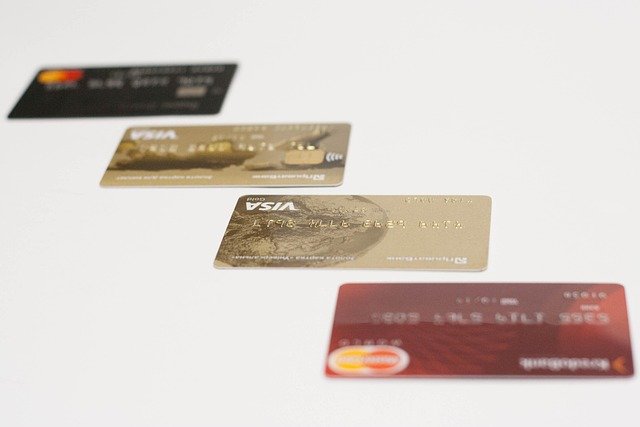Understanding Personal Loan Options for Canadians
Canadians face rising living costs and unexpected expenses, making personal loans an increasingly popular financial tool. This guide breaks down key options—from instant-approval loans and bad-credit solutions to debt consolidation offers and home-equity financing—so you can compare eligibility requirements, interest rates, and repayment terms to find the option that best fits your needs and budget

What are the main types of personal loans available in Canada?
Personal loans in Canada come in several forms, each designed to meet different financial needs. The most common types include:
-
Unsecured personal loans: These don’t require collateral and are based on your creditworthiness.
-
Secured personal loans: These require an asset as collateral, often offering lower interest rates.
-
Lines of credit: Flexible borrowing options that allow you to draw funds as needed.
-
Installment loans: Fixed-term loans with regular payment schedules.
-
Payday loans: Short-term, high-interest loans typically used for emergencies.
Understanding these options is crucial for making an informed decision that aligns with your financial situation and goals.
How do instant-approval loans work, and what documentation is required?
Instant-approval loans offer quick access to funds, often with same-day or next-day approval. To qualify for these loans, you’ll typically need to provide:
-
Proof of identity (government-issued ID)
-
Proof of income (pay stubs or bank statements)
-
Employment verification
-
Credit score information
The application process is usually online, with automated systems reviewing your information. While approval can be fast, it’s important to note that “instant” doesn’t always mean immediate funding. Some lenders may require additional verification, which can extend the process.
What should you know about bad-credit personal loans in Canada?
Bad-credit personal loans are designed for individuals with lower credit scores or limited credit history. When considering these loans:
-
Compare interest rates and fees carefully, as they tend to be higher than standard loans.
-
Look for lenders specializing in bad-credit loans, as they may offer more favorable terms.
-
Be aware of potential hidden costs, such as origination fees or prepayment penalties.
-
Consider secured loan options, which may offer lower rates if you have assets to use as collateral.
It’s crucial to read the fine print and understand the total cost of borrowing before committing to a bad-credit loan.
How can debt consolidation loans help lower monthly payments?
Debt consolidation loans can be an effective way to simplify your finances and potentially reduce your monthly payments. Here’s how they work:
-
You take out a new loan to pay off multiple existing debts.
-
This consolidates your debts into a single loan with one monthly payment.
-
The new loan often has a lower interest rate than your existing debts.
-
The repayment term may be extended, further reducing monthly payments.
By streamlining your debts, you can save money on interest and improve your cash flow. However, it’s important to address the root causes of debt to avoid falling back into financial difficulty.
What are some unique considerations for personal loans in Canada?
When exploring personal loan options in Canada, keep these factors in mind:
-
Provincial regulations: Loan terms and availability may vary by province.
-
Credit bureau differences: Canada uses Equifax and TransUnion, which may have different scoring models than other countries.
-
Tax implications: Interest paid on personal loans is generally not tax-deductible, unlike some other forms of borrowing.
-
Alternative lenders: Credit unions and online lenders often offer competitive rates compared to traditional banks.
-
Government programs: Some provinces offer low-interest loan programs for specific purposes, such as home renovations or education.
Understanding these Canadian-specific factors can help you make a more informed decision when choosing a personal loan.
How do personal loan rates and terms compare across different Canadian lenders?
When comparing personal loan options in Canada, it’s essential to look at rates, terms, and overall costs. Here’s a comparison of some popular Canadian lenders:
| Lender | Loan Amount Range | Interest Rate Range | Term Length | Key Features |
|---|---|---|---|---|
| Tangerine | $5,000 - $50,000 | 2.99% - 16.99% | 2-5 years | No fees, flexible repayment options |
| Fairstone | $500 - $35,000 | 19.99% - 39.99% | 6-60 months | Options for all credit scores |
| Borrowell | $1,000 - $35,000 | 5.99% - 29.19% | 3-5 years | Free credit score monitoring |
| Mogo | $500 - $35,000 | 9.9% - 47.72% | 1-5 years | Quick approval, free credit score access |
| CIBC | $5,000 - $50,000 | Prime + 2.25% - Prime + 12.50% | 1-5 years | Relationship discounts available |
Prices, rates, or cost estimates mentioned in this article are based on the latest available information but may change over time. Independent research is advised before making financial decisions.
When choosing a personal loan, consider not only the interest rate but also any fees, repayment flexibility, and the lender’s reputation. Remember that your personal rate will depend on factors such as your credit score, income, and existing debts.
In conclusion, personal loans can be a valuable financial tool for Canadians facing various financial needs. By understanding the different types of loans available, their eligibility requirements, and how they compare across lenders, you can make an informed decision that best suits your financial situation. Always carefully consider the terms and long-term impact of any loan before committing, and explore multiple options to ensure you’re getting the most favorable terms possible.






